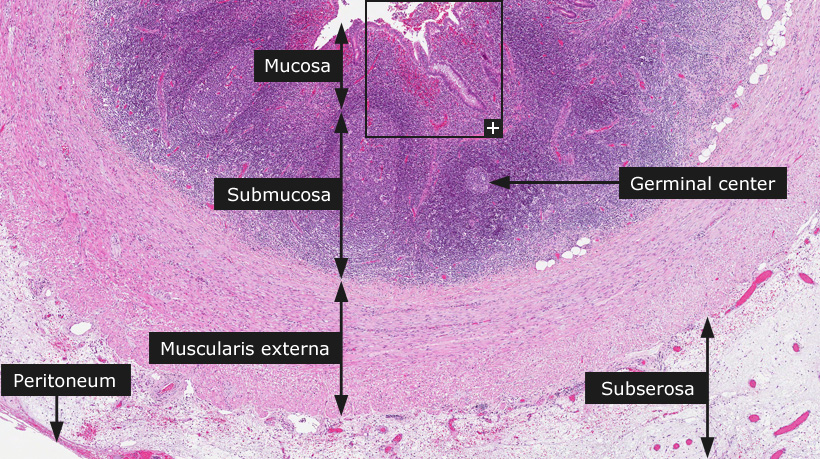DictionaryAppendixAppendix
AppendixThe appendix is a short intestinal protrusion attached to the cecum, the first part of the large intestine (colon), and ranges between 6-10 cm in length. The inner lining, facing the lumen of the appendix, is covered by a glandular epithelium with intestinal glands that extend into the deeper layers of the mucosa. The glands are lined with simple columnar epithelium and a high number of mucin producing goblet cells that are characterized by a large globule of mucus located in the apical portion of the cell. The lamina propria typically contains lymphocytes that partly obscure the underlying muscularis mucosae, which separates the mucosa from the submucosa. The submucosa is almost fully occupied by lymphoid tissue mainly arranged in lymphatic nodules. The lymphatic nodules are recognized by a circular aggregation of densely packed lymphocytes that stains dark with HE. The center of the lymphoid nodules stain lighter and are termed germinal centers. The germinal center contains the larger dividing lymphoblasts, similar to the arrangement in lymph nodes. The outer portions of the submucosa harbor larger vessels and have less dense infiltrates of immune cells. Similar to the colon, an inner circular muscle layer and a thin external longitudinal muscle layer comprise the muscularis externa that encircles the appendix. Outside of the muscular layers there is a subserosa containing loose connective tissue, vasculature and nerves. The outermost located peritoneum consists of a thin lining of mesothelial cells. |